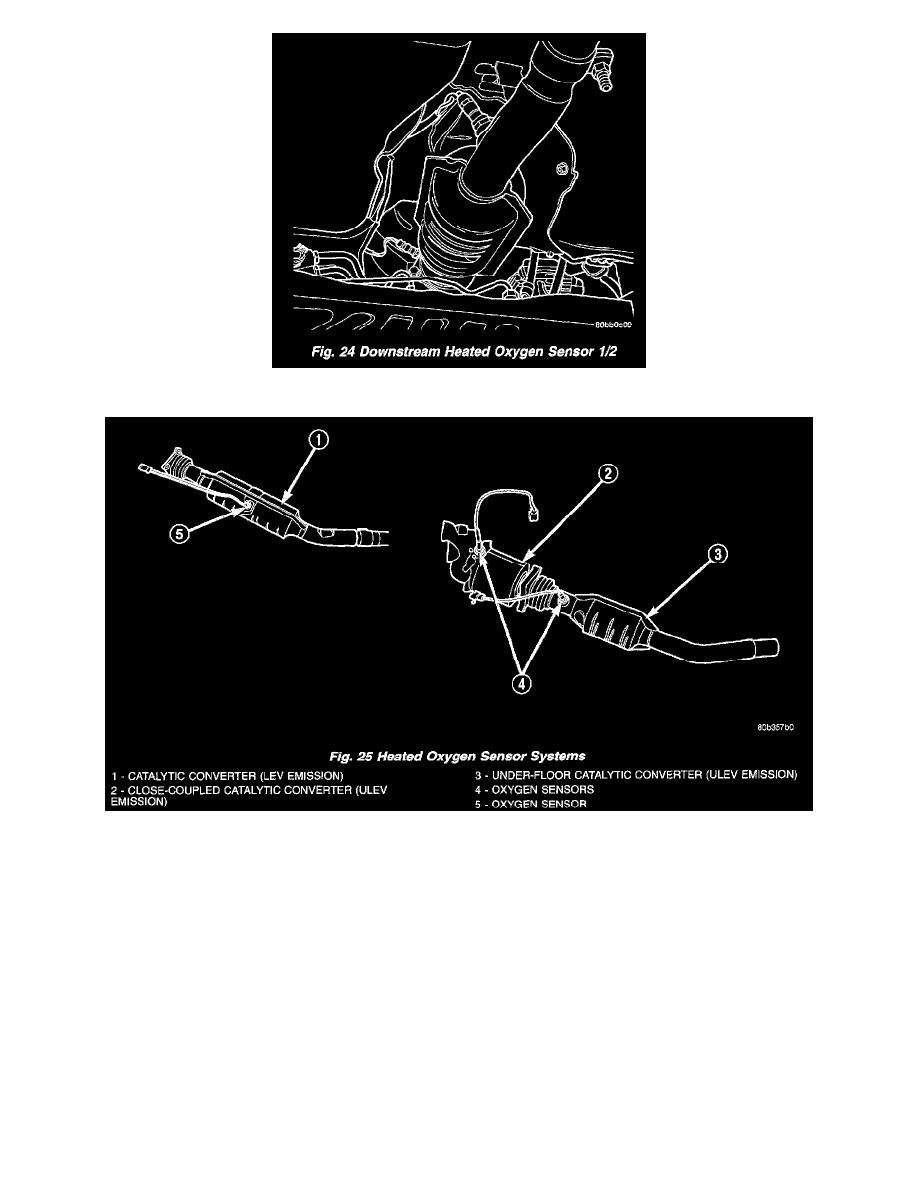Neon R/T L4-2.0L VIN F HO (2001)

Fig. 24 Downstream Heated Oxygen Sensor 1/2
Fig. 25 Heated Oxygen Sensor Systems
The downstream heated oxygen sensor threads into the system depending on emission package. Federal package the O2s is mounted after the catalytic
convertor, LEV package the O2s is mounted mid catalytic convertor, ULEV package is mounted between the catalytic convertor.
Separate controlled ground circuits are run through the PCM for the upstream O2 sensors.
As vehicles accumulate mileage, the catalytic convertor deteriorates. The deterioration results in a less efficient catalyst. To monitor catalytic convertor
deterioration, the fuel injection system uses two heated oxygen sensors. One sensor upstream of the catalytic convertor, one downstream of the convertor.
The PCM compares the reading from the sensors to calculate the catalytic convertor oxygen storage capacity and converter efficiency. Also, the PCM
uses the upstream heated oxygen sensor input when adjusting injector pulse width.
When the catalytic converter efficiency drops below emission standards, the PCM stores a diagnostic trouble code and illuminates the malfunction
indicator lamp (MIL).
The O2S produce voltages from 0 to 1 volt, depending upon the oxygen content of the exhaust gas in the exhaust manifold. When a large amount of
oxygen is present (caused by a lean air/fuel mixture), the sensors produces a low voltage. When there is a lesser amount present (rich air/fuel mixture) it
produces a higher voltage. By monitoring the oxygen content and converting it to electrical voltage, the sensors act as a rich-lean switch.
